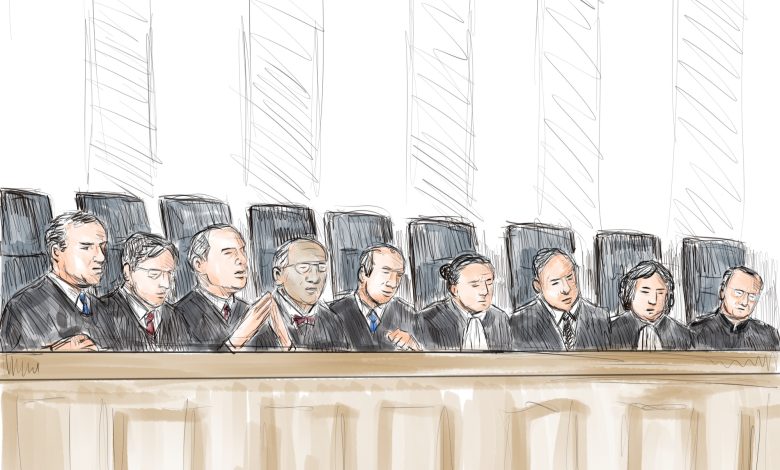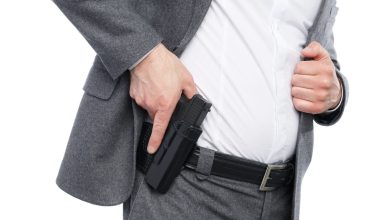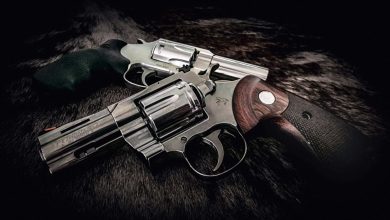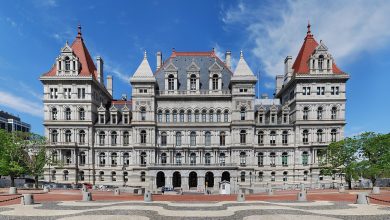SCOTUS Appears to be Leaning Toward Support of Biden Admin on Ghost Guns

On Tuesday, the Supreme Court heard oral arguments in Garland v. VanDerStok, a case that could redefine the federal government’s ability to regulate “ghost guns”—untraceable firearms assembled from kits or components without serial numbers. The Biden administration argues that these kits, which can be quickly turned into functioning firearms, should be subject to the same regulations as traditional guns. The case arose out of a 2022 rule from the Bureau of Alcohol, Tobacco, Firearms, and Explosives (ATF) and implemented at the behest of the Biden Administration that extended the definition of “firearm” under the 1968 Gun Control Act to include gun kits that can be “readily converted” into operational firearms.
Background and Legal Challenges
The ATF rule attempts to address the rise in ghost gun use by requiring manufacturers to serialize gun kits and conduct background checks on buyers, the same as would be required for complete firearms. Challengers, including gun-rights advocacy groups the Firearms Policy Coalition (FPC) and the Second Amendment Foundation (SAF), a company, Tactical Machining LLC and two individual gun owners, argue that the ATF overstepped its authority. They contend that the rule covers items that are not yet functional firearms, thus exceeding the scope of the 1968 law. This argument found support in the conservative-leaning 5th Circuit Court of Appeals, which largely upheld a decision blocking the ATF rule, stating that a partially completed frame or receiver is not yet a “firearm” under the statute.
After the appeals court’s decision, the Biden administration appealed to the Supreme Court, which allowed the rule to remain in effect while the case progressed. The Supreme Court’s 5-4 decision to keep the regulation in place signaled a possible split among the justices, with Chief Justice John Roberts and Justice Amy Coney Barrett joining the court’s three liberal members, according to Vox, a typically anti-gun media outlet, and SCOTUSblog, a blog that follows cases being heard at the Supreme Court.
Key Arguments and Reactions in the Court
U.S. Solicitor General Elizabeth Prelogar, representing the government, defended the rule by highlighting the ease with which ghost gun kits can be assembled into fully functioning firearms. Prelogar noted that some kits are marketed as being “ridiculously easy to assemble and dummy-proof” and can be converted into operational guns within minutes, according to SCOTUSblog. She argued there are inherent dangers in allowing unregulated gun kits to be sold without serial numbers or background checks, stating that “the whole reason why you want to get your hands on one of these unserialized, untraceable firearms is if you are barred by law from having a gun or if you want to use that gun in a crime”
As explained in the recent article on The Truth About Guns highlighting the case, however, “The case, Garland v. VanDerStok, challenges the Department of Justice’s (DOJ) 2022 Final Rule that redefined important legal terms dealing with guns, including ‘firearm,’ ‘receiver’ and ‘frame,’ making the longstanding American tradition of building personal firearms pretty much a thing of the past.” Building their own firearms is a long, time-honored hobby of a number of firearms enthusiasts.
Peter Patterson, the attorney representing the challengers, argued that the ATF’s rule “exceeded its authority by operating outside of the bounds set by Congress” in the 1968 Gun Control Act, reported SCOTUSblog. He contended that Congress did not intend to regulate incomplete frames or receivers and that the rule improperly extends to items that are not yet operational firearms. Patterson asserted, “It would be very odd for the rule to apply to frames or receivers that ‘may readily be converted’ to function as a frame or receiver when Congress did not use that same language in defining frames or receivers in the 1968 law.”
However, several justices appeared skeptical of the challengers’ arguments. Chief Justice Roberts questioned whether the sale of these kits genuinely caters to hobbyists, suggesting that the minimal effort required to assemble a ghost gun was not akin to other do-it-yourself projects.
According to Vox, the argument played out like this:
Early in the argument, while Solicitor General Elizabeth Prelogar was making the government’s case, Justice Samuel Alito asked her a series of hypotheticals about incomplete objects. Is a pen and a blank pad of paper a “grocery list?” Does a bunch of uncooked eggs, ham, and peppers constitute an “omelet?” Alito’s point appeared to be that, just like untouched ingredients don’t constitute an “omelet,” an incomplete firearm is not a gun.
But Barrett seemed unconvinced. Almost immediately after Alito finished grilling Prelogar, Barrett asked about a slightly different hypothetical. What if someone purchased an omelet kit from Hello Fresh, a service that delivers ready-to-cook meal kits to people’s homes. Barrett’s point was pretty clear: While a bunch of uncooked ingredients may not always constitute an “omelet,” the answer is different when someone buys a kit whose sole purpose is to be put together into an omelet.
The same rule, Barrett suggested, should apply to ghost gun kits.
Roberts, meanwhile, was more direct than Barrett. “What is the purpose of selling a receiver without the holes drilled in it?” the Chief Justice asked Patterson. In response, Patterson claimed, somewhat implausibly, that people may buy a ghost gun kit because they enjoy the experience of building a gun much like some hobbyists enjoy working on their own car.
But Roberts didn’t buy this argument at all. “Drilling a hole or two,” he dryly responded to Patterson, “I would think doesn’t give the same sort of reward that you get from working on your car on the weekend.”
Later in the argument, after Prelogar was back at the podium, she stuck the knife in Patterson’s argument. Federal law, she noted, doesn’t ban ghost gun kits, it merely requires ghost gun sellers to follow the same background check and serial number laws as any other gun seller. So, if there were a market for law-abiding hobbyists who want to drill a couple holes before they fire their gun, those hobbyists could still get a ghost gun if they submitted to a background check.
While Vox suggested, “once the government issued a rule stating that ghost guns are subject to the same laws as any other gun, the market for this product dried up. Turns out, hobbyists weren’t interested in buying almost-complete guns with missing holes,” isn’t true. If it was, this case wouldn’t be so closely followed by the gun community. While never a pursuit of the broader firearms community, there are still any number of gun enthusiasts who enjoy building their own firearms as exhibited in the availability of components for the modular AR-style rifle. What the ATF ruling did do is establish unnecessary regulations that stymied manufacturers and legal buyers and virtually outlawed the way the industry had always operated.
Broader Implications and Future of the Rule
This case carries significant implications for how the federal government can regulate firearms, particularly as technological advances enable individuals to bypass traditional purchasing channels. According to WCVB, George Washington University School of Law professor Alan Morrison observed that the case is more about federal agency power than the Second Amendment, noting that it “will test how much the court is willing to disregard what agencies determine.” The outcome could affect not just ghost guns but broader regulatory authority over firearms.
Observers of the oral arguments, including those at SCOTUS Blog, NPR and Vox, suggest that a majority of the justices seemed inclined to support the government’s rule. Both Chief Justice Roberts and Justice Barrett appeared unconvinced by the challengers’ assertion that the 1968 law does not cover ghost gun kits. Justice Kavanaugh, who previously expressed concerns about the possibility of criminalizing accidental noncompliance by sellers, sought reassurance from Prelogar that such scenarios would not result in prosecutions unless the seller “willfully” violated the law.
Prelogar clarified that “a manufacturer who believed in good faith that it was not violating the law could not be convicted for failing to put a serial number on the gun or for selling the gun without a license.” She emphasized that the ATF’s focus was on sellers intentionally circumventing regulations, rather than on inadvertent errors. It’s doubtful the ATF or other federal agencies will get that memo, however, should such regulation become the permanent law of the land.
Anticipated Ruling and Conclusion
While a final decision is not expected until the spring or early summer of 2024, the justices’ questioning suggests a possible shift in how the Court approaches gun regulations, even as it remains cautious about broader agency powers. If the rule is upheld, it would solidify the ATF’s authority to regulate the sale of ghost gun kits as firearms, potentially reshaping the landscape of federal gun regulations. With at least five justices appearing sympathetic to the government’s arguments, the outcome may reflect a rare instance where this conservative-leaning Court sides with a gun regulation measure, Vox theorized.
Read the full article here






